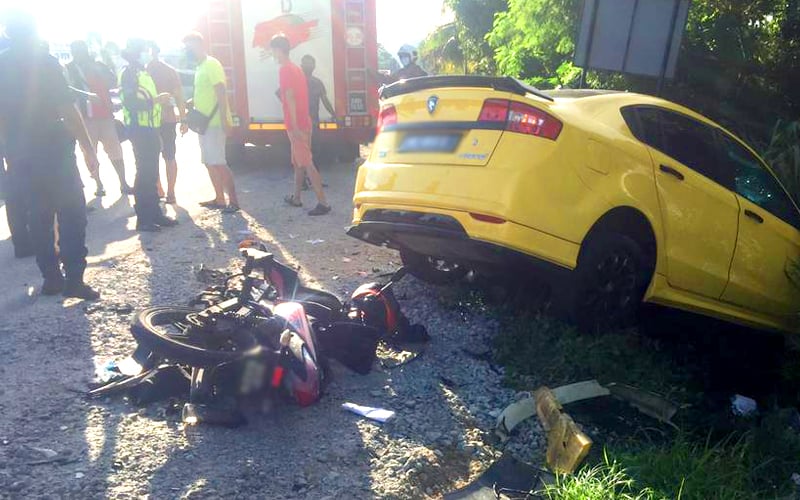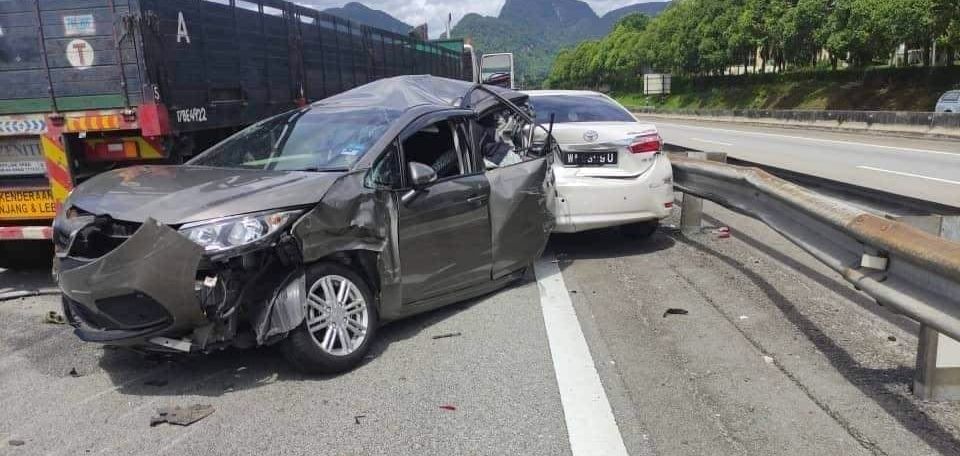The study, published by car subscription service Finn.com, admittedly has a few shortcomings, but there’s no disputing that road deaths in Malaysia are much too high.
According to data collected by Finn.com, it’s clear that road safety levels vary significantly across the globe due to various factors, including driver quality, road conditions, laws, and speed limits. Curious about which countries have the safest roads and where drivers should exercise caution, they undertook an analysis of road safety-related metrics.
The findings reveal the nations with the most secure road environments, as well as those posing higher risks. Suffice it to say Malaysia did not fare especially well. Let’s explore some of the details.
THE SAFEST ROADS
As noted, road safety levels vary significantly worldwide, influenced by factors like driver competence, road conditions, laws, and speed limits. The study considered factors like road deaths per 100,000 people, general level of traffic, seat belt use, speed limits, and the physical quality of the roads.

1. Netherlands – Score: 7.86/10
The Netherlands boasts the safest roads globally, with a remarkable score of 7.86/10. It outperforms other nations in road quality, earning a score of 6.4. Additionally, the country exhibits high seatbelt usage and minimal traffic congestion. Renowned for its cycling culture, the Netherlands encourages fewer motorists on the roads.
2. Norway – Score: 7.47/10
Securing the second spot, Norway possesses highly safe roads. It ranks second for the lowest number of road fatalities per 100,000 people and maintains a modest motorway speed limit of 110 kph. Despite icy conditions in some regions, Norway’s road safety achievements remain commendable.
3. Sweden and Estonia – Score: 7.42/10
Sweden and Estonia share third place with a score of 7.42/10, and coincidentally, they are separated by a mere 153 km of the Baltic Sea. Each excels in different safety aspects. Sweden reports few road fatalities and a high seatbelt-wearing rate, while Estonia boasts low traffic levels and a minimal percentage of alcohol-related road deaths.

THE COUNTRIES WHERE YOU’RE LEAST LIKELY TO DIE ON THE ROAD
You might think a ranking of countries on whose roads you’re least likely to die would mirror the “safest roads” list, but while there is some correlation, the two sets of rankings are distinct.
The safest roads list, as outlined above, considers a number of contributing factors. This list looks only at one: Road deaths per 100,000 people. It’s an unflinching statistic that paints a pretty inarguable picture of where you’re least likely – and most likely – to perish while on the road.
1. Iceland
2.05 road deaths per 100,000 people:
Iceland has the fewest road deaths, with just 2 per 100,000 people. Despite poor weather conditions and many unpaved roads, Icelandic drivers are some of the least likely in the world to face fatalities on the road. Iceland is a hub for tourism, consequently, many popular roads around the golden circle and Reykjavik are tarmacked and well-maintained compared to the sparsely populated centre of the country which is connected by a network of gravel roads.
2. Norway
2.12 road deaths per 100,000 people:
Norway has similar road issues to Iceland, mainly based on adverse winter weather conditions. Despite this, Norway’s roads also have the least number of reported deaths, as there are only 2.12 road deaths per 100,000 people. Scandinavian driving lessons and tests are notoriously thorough, and speeding fines are high, resulting in safer roads.
3. Switzerland
2.25 road deaths per 100,000 people:
Switzerland has the third-fewest road deaths per 100,000 people. Swiss driving laws are strictly enforced, and there is little tolerance for speeding and reckless driving. This no-nonsense attitude may have contributed to the low death rate. As a country situated in and around the Alps, Swiss roads have a reputation for spectacular views from winding mountain passes.

THE COUNTRIES WHERE YOU’RE MOST LIKELY TO DIE ON THE ROAD
At the other end of the spectrum, those road deaths per 100,000 are more than an order of magnitude higher. Unfortunately, this is where you’ll find Malaysia.

1. Saudi Arabia
35.94 road deaths per 100,000 people:
Saudi Arabia has the highest number of road deaths per 100,000 people, which is 27 more than the average of 8.57. Saudi Arabia has large crude oil deposits, meaning petrol prices are very low. As a result, more people can afford to drive fast fuel-burning supercars which can be less safe than common cars due to factors such as poor visibility.
2. Thailand
32.21 road deaths per 100,000 people:
Thailand has the second deadliest roads in the world, with 32 deaths per 100,000 people. Many Thai citizens ride motorcycles rather than drive cars, and it is common for many people to ride on motorbikes together. This, combined with a lack of helmets, can result in an increased likelihood of road deaths.
3. Malaysia
22.48 road deaths per 100,000 people:
Malaysia has the third-highest number of road deaths per 100,000 people. Though the number is rather significantly lower than those of Saudi Arabia or Thailand, the data show a majority of Malaysia’s road deaths – about 59% – are motorcyclists.
It should come as no surprise that the majority of accidents and fatalities involve motorcyclists and their passengers. Independent research shows that an average of eight motorcyclists or their pillions (passengers) have been killed every day, 60 per week, and 243 every month for the last 10 years. A staggering total of 89,953 motorcyclists have died on Malaysia’s roads between 2001 and 2021.
That should quality as a public health crisis.

In 2022, there were 6,067 fatalities recorded in a shocking 545,630 reported accidents – that’s more than one accident every minute, for the whole year, with a road death occurring every 90 minutes. And if that statistic is an eye-opener, consider that not every accident or even cause of death resulting from a traffic accident is reported to the authorities, thus the actual number must be much higher.
There were 4,539 road deaths in 2021, and 4,634 in 2020. These years saw lower numbers, of course, due to the various pandemic restrictions and movement control orders.
Despite such alarming figures, these numbers purportedly represent a decrease from a decade ago, according to government figures, though a sharp increase was seen in 2022 as the country fully emerged from the pandemic years. It’s also worth noting that Malaysia’s road transport authorities appear to track road death rates as a subset of registered vehicles rather than as a subset of the population, which honestly seems a bit confusing.
The takeaway from all this? Pay attention, drive safely in accordance with weather, road conditions, and traffic, and watch out for motorcyclists.
METHODOLOGY
As noted at the beginning of the article, we consider this study to have some minor limitations, which are made clear in the summary of its methodology.
- A list of countries was selected from OECD member states and developed nations with an HDI of over 8.
- Any nation for which complete data could not be found was removed.
- Road deaths per 100,000 people were sourced from the World Health Organization.
- The road quality score was sourced from The Global Economy.
- The traffic level was sourced from Numbeo.
- Seatbelt-wearing percentages and percentages of road deaths caused by alcohol were both sourced from the WHO.
- Speed limits per country were sourced from Wikipedia.
- Each country was given a normalized score out of 10 for each factor before an average of these scores was taken.
"ExpatGo welcomes and encourages comments, input, and divergent opinions. However, we kindly request that you use suitable language in your comments, and refrain from any sort of personal attack, hate speech, or disparaging rhetoric. Comments not in line with this are subject to removal from the site. "























